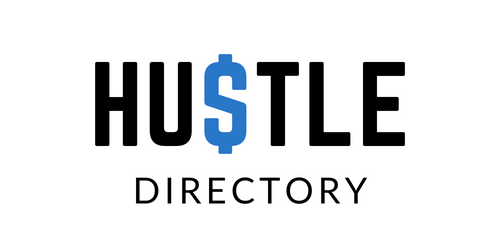The e-learning industry has experienced exponential growth in recent years, with the worldwide market projected to be worth a staggering $325 billion by 2025, according to TechJury. This booming market is driven by an insatiable appetite for micro education, as people increasingly seek to learn specific skills or smaller tasks that improve their lives.
Online courses have transformed the way we learn, with an array of topics ranging from mastering the art of jump rope to preparing for a career change. The most exciting part? You don’t need official certification or expert status to create and sell online courses. As long as you’ve got valuable knowledge and experience to share, you can dive into this profitable market and earn a solid income.
A big plus of making online courses is their limitless scalability. Once you’ve developed a course, you can sell it to millions of people with minimal upkeep. Of course, you’ll need to update your course occasionally to maintain its relevance, but the initial effort pales in comparison to the potential rewards.
In this all-inclusive guide, we’ll dive into the journey of developing, launching, and expanding a thriving online course tailored to the constantly increasing appetite for micro education. So, buckle up, and let’s embark on this exciting journey together!
Identifying Your Niche and Target Audience
When you’re gearing up to craft online courses and dive into the booming e-learning market, it’s vital to pinpoint that perfect balance between your expertise and what folks are eager to learn and ready to invest in. To identify this intersection, you need to clearly define your niche and target audience.

Start by listing everything you’re better at than the average person. Think about the skills or knowledge that your friends, family, or colleagues usually come to you for help with. This exercise will help you uncover your strengths and areas of expertise that others might find valuable.
Once you have a list of potential topics, research the market demand for each one. You can use tools like Google Trends, keyword research tools, or even check popular online course platforms for similar courses and their popularity. This will give you an idea of what people are interested in learning and whether there’s a market for your expertise.
Now that you’ve identified the topics with potential, it’s time to define your target audience. Consider the demographics, interests, and pain points of the people who would benefit most from your course. Understanding your target audience will allow you to create a course that resonates with them and addresses their needs, making it more likely that they’ll find value in it and be willing to pay for it.
With a clear understanding of your niche and target audience, you’re well-prepared to create and sell online courses that not only showcase your expertise but also provide valuable insights and solutions to your students, setting you up for success in the e-learning market.
Choosing Between a Marketplace and Building Your Own Site
When it comes to creating and selling online courses, you have two main options: using a marketplace or building your own site. Each option has its unique advantages and drawbacks, which we’ll explore in more detail below.
Marketplace
A marketplace is a platform where multiple course creators can host and sell their courses to an existing audience. Examples of popular marketplaces include Udemy and Skillshare. These platforms provide tools and resources to help you create online courses and make them available to a large number of potential students.
Pros:
- Exposure to a larger, built-in audience
- Marketing support from the platform
- Less technical expertise required to set up and host your course
Cons:
- Limited control over branding and pricing
- Higher competition with other courses on the platform
- Platform fees or revenue sharing, leading to potentially lower earnings
Building Your Own Site
Creating your own website to host and sell online courses gives you more control over your brand, pricing, and customer relationships. You can use platforms like Thinkific or Teachable to sell online courses from your own website, without needing extensive technical knowledge.
Pros:
- Full control over branding, pricing, and customer data
- Higher profit margins as there are no revenue sharing agreements
- Ability to create a unique and personalized user experience for your students
Cons:
- Requires more time and effort to set up and maintain the website
- The responsibility of marketing and attracting students falls solely on you
- Potentially higher initial costs for website development and maintenance
When deciding between a marketplace and standalone platforms to sell courses online, consider factors such as your target audience, marketing resources, technical expertise, and long-term goals. Each option offers distinct benefits and challenges, so choose the one that best aligns with your objectives and capabilities.
Creating High-Quality Course Content

Producing high-quality content is essential for the success of your online course. While perfection is not a requirement, it’s crucial to strike a balance between quality and practicality. Remember, you can always update and refine your course material later based on feedback and evolving industry trends.
When creating content, ensure that your style and presentation align with the subject matter. For instance, if you’re teaching a course on running form, demonstrate the techniques in action by filming yourself outdoors or in a gym setting. On the other hand, if you’re teaching a course on email marketing, you’ll want to be at your desk, sharing examples, technical tactics, and showcasing relevant tools and software.
Here are some tips to help you create high-quality course content:
- Outline your course structure: Before you start creating content, develop a clear and logical course outline that breaks down the material into manageable sections and modules. This will make it easier for your students to follow and digest the information.
- Choose the right format: Based on the subject matter and your target audience, determine the most effective content format for your course. This could include video lectures, audio recordings, written material, or a combination of these formats.
- Invest in decent equipment: To ensure a professional look and feel, invest in quality equipment for audio and video recording. This doesn’t mean you need to spend a fortune, but a good microphone and camera can make a significant difference in the overall presentation.
- Engage your audience: Make your content engaging by incorporating storytelling, real-life examples, and practical exercises. Encourage interaction and facilitate discussions to keep your students involved and motivated.
- Edit and refine: Take the time to edit your content, removing any mistakes or unnecessary information. This will help to maintain a consistent quality and flow throughout the course.
By focusing your curriculum on what the user wants to learn, you’ll be able to create and sell online courses that people actually want. It doesn’t have to be flawless, but it should at least deliver the value your students are seeking.
Marketing Tactics
Effective marketing is crucial for reaching your target audience and driving sales when you’re looking to sell online courses. Building a robust marketing funnel and offering multiple products with different price points can significantly increase your chances of converting prospects into paying customers. If a user doesn’t opt for a higher-tier product, you can attempt to down sell them to a more affordable option, increasing the likelihood of a sale.
Here are some marketing tactics to help you successfully sell online courses:
- Create a landing page: Develop a compelling landing page that highlights the benefits of your course, showcases testimonials, and clearly communicates the value you’re offering. This will serve as the cornerstone of your marketing efforts, capturing leads and driving conversions.
- Leverage email marketing: Build an email list of interested prospects and nurture them with valuable content, special offers, and regular updates about your course. Email marketing is a highly effective channel for building trust and promoting your online course.
- Utilize content marketing: Create blog posts, articles, podcasts, or videos that provide valuable information related to your course topic. Give value away for free. This not only helps establish your authority in the niche but also drives organic traffic and attracts potential students. When a user sees you giving detailed guides for free, they’ll assume your paid course can offer much more value.
- Leverage social media: Use social media platforms to promote your online course, engage with your target audience, and share valuable content. Social media advertising can also help you reach a wider audience and drive targeted traffic to your landing page.
- Run webinars or live events: Hosting webinars or live events related to your course topic can be an excellent way to showcase your expertise, engage with potential students, and offer a taste of what they can expect from your online course.
- Collaborate with influencers: Partner with influencers or experts in your niche to promote your course, exchange guest blog posts, or conduct joint webinars. This can help expand your reach and credibility in the eyes of potential students.
- Optimize for SEO: Ensure that your website and content are optimized for search engines to drive organic traffic and increase visibility. Research relevant keywords and incorporate them into your content to improve your chances of ranking on search engine results pages.
- Capture Testimonials: One of the absolute most crucial parts of marketing your online course is to collect positive testimonials and reviews from your students. If your course helps them achieve their goal, get them to give you a review. Screenshot their messages informing you of their success. This is extremely useful in building trust with future customers.
By implementing these marketing tactics and tailoring your strategies to your target audience, you’ll soon be able to successfully sell online courses and generate consistent revenue from your new e-learning business.
Building a Community Around Your Course
Creating a strong community around your online course can significantly enhance your student’s learning experience and foster loyalty, leading to higher retention rates and word-of-mouth referrals. When you successfully build a community, you not only improve the chances of selling your online courses but also create a support system that encourages your students to succeed.

Here are some strategies to help you build a thriving community around your online course:
- Encourage interaction and engagement: Design your course content in a way that promotes interaction among your students. Include group activities, discussions, and Q&A sessions to facilitate collaboration and engagement.
- Create a dedicated online forum or group: Set up a private forum, Facebook group, or Slack channel where your students can interact with each other, ask questions, and share their experiences. This will help them feel more connected and supported throughout their learning journey.
- Host regular live events: Organize live webinars, Q&A sessions, or workshops to connect with your students in real-time, address their concerns, and provide additional value. Regular live events can help strengthen the sense of community and keep your students engaged.
- Provide personalized support: Offer one-on-one support to your students through email, chat, or video calls. Personalized support can make your students feel valued and heard, increasing their commitment to the course and the community.
- Celebrate student success: Acknowledge and celebrate your students’ achievements by sharing their success stories, showcasing their progress, or even offering rewards and incentives for reaching milestones. This can help create a positive atmosphere and inspire others to strive for success.
- Ask for feedback and implement improvements: Request feedback from your students and make improvements based on their suggestions. This demonstrates that you value their opinions and are committed to making the course and community better.
By investing time and effort into building a community around your online course, you can create a supportive learning environment that fosters student success and, in turn, helps you sell online courses more effectively. A strong community not only enhances your students’ experience but also establishes a network of advocates who can promote your course to others.










